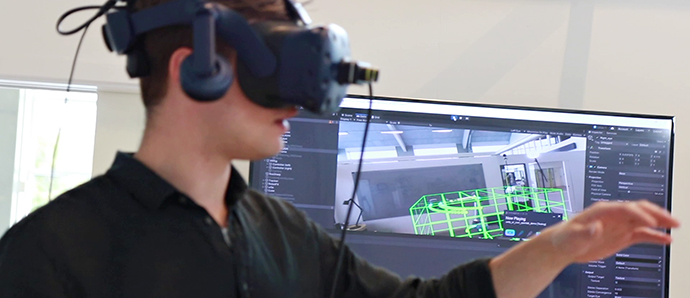When the flat screen with the spreadsheet is not enough: 'Cross reality' shows more
English subtitles are available in the YouTube player
The past with its old spreadsheets can be set aside so that the future with visualization technologies such as virtual reality, mixed reality and augmented reality can be seriously driven into position within robot technology.
This will mean that data becomes far more intuitive and understandable.
This is the prediction from Mads Baatrup, consultant at the Danish Technological Institute in Odense.
- Compared to sitting and looking at an excel sheet or at some data coming out of the robot, XR provides a much faster and more tangible understanding of the data and what that data means in the work area, he says.
Mads Baatrup is investigating how to use the different forms of cross reality (XR) in robot technology.
- We are taking a closer look at how we can visualize different things that the robot does in a way that is easy for the user or operator to understand the data, says Mads Baatrup and adds:
- Amongst other things, we are looking at safety: how can we visualize the different safety-relevant data from the robot and its sensors so that it is easy for the user or operator to actually see safety levels in a very intuitive way?
No harder than that
When using XR with robots, there are many options.
According to Mads Baatrup, one of the important advantages of XR is that you no longer need to be a data analyst or programmer to be able to understand what kind of process the robot is currently doing.
- Some data is just easier to understand and deal with when you can visualize it in three dimensions, for example, where the employee fits into the process, he says.
Cross reality offers many options
What is the best, fastest and easiest way to find the area where you can safely stand, given the robot's current task and movement?
This is one of the questions currently being investigated in the Danish Technological Institute's XR Lab in Odense.
- Here we visualize how the robot calculates its safety area. When the robot has finished calculating the area that it may use for its task, you know where you can safely be outside. You can then set up safety fences or some sensors so that you can create a safe area in as little space as possible, says Mads Baatrup.

What's next?
Mads Baatrup looks at more than safety in the XR Lab.
- We have also looked at making a virtual model of a robot that you can interact with using a controller. The physical robot then moves according to the position of the virtual robot, he says.
This technology could be very advantageous for employee training, where virtual objects can help the new employee get to know the equipment.